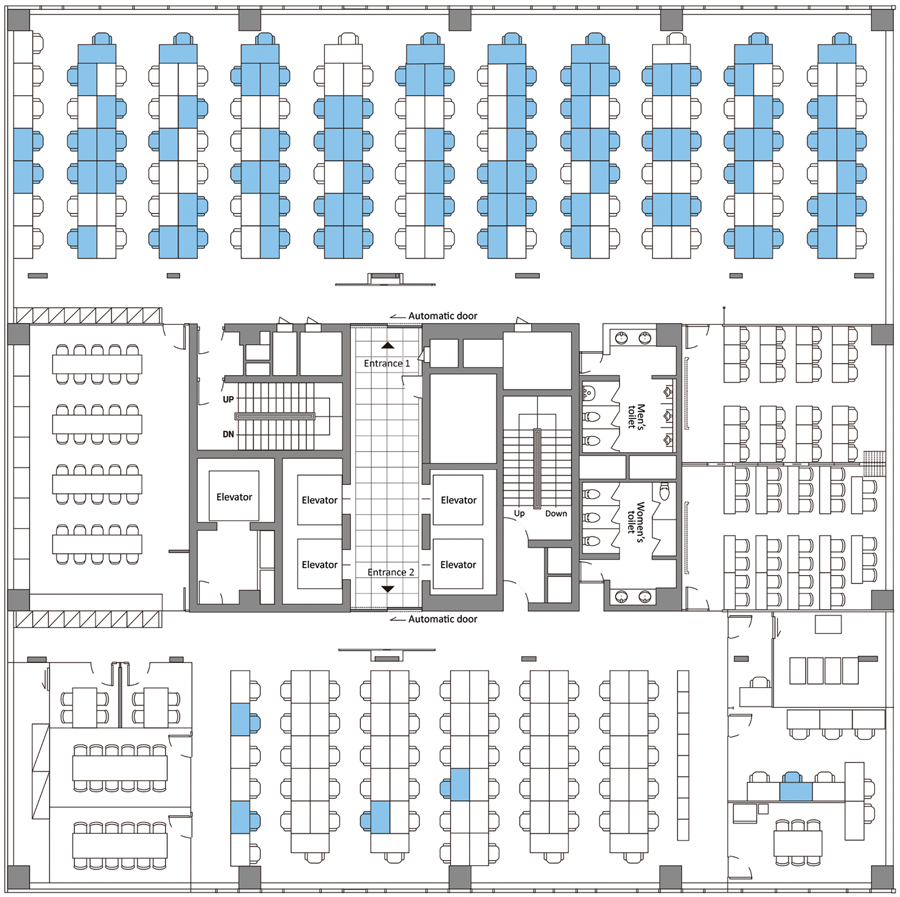Dagne
Elite member
Coronavirus outbreak in a South Korea call center. Desks were packed into an open space. There was an airconditioning system. Who knows when the filters were changed.
Haven't seen this in movie theaters, so many it's not just close contact, but the fact they were talking all day. People talk in airplanes too so not good news for airlines, trains, buses.
https://wwwnc.cdc.gov/eid/article/26/8/20-1274_article
This is really interesting!
The infected people in the call centre where seated like that (marked by blue):

I think it must related to air conditioning - otherwise, it is impossible to see a pattern - it did not spread around one person which it should if the virus was spreading by "droplets method", besides it virus attack rate among other people in the building - is considerably less - 8,5%, compared to 43,5% among call centre employees. If employees of one side of the call centre were counted, the attack rate must be been even higher - among 137 desks (we don't know if they all were filled by people) 80 persons got infected, so the attack rate must be at least 58%.
This is the extract from the study:
[FONT="]We tested 1,143 people for COVID-19 - 922 employees, 201 residents, and 20 visitors.
[/FONT][FONT="]We identified 97 confirmed COVID-19 case-patients in building X, indicating an attack rate of 8.5%. However, if we restrict our results the 11th floor, the attack rate was as high as 43.5%.
This outbreak shows alarmingly that severe acute respiratory syndrome coronavirus 2 (SARS-CoV-2) can be exceptionally contagious in crowded office settings such as a call center. The magnitude of the outbreak illustrates how a high-density work environment can become a high-risk site for the spread of COVID-19 and potentially a source of further transmission. Nearly all the case-patients were on one side of the building on 11th floor. Severe acute respiratory syndrome coronavirus, the predecessor of SARS-CoV-2, exhibited multiple superspreading events in 2002 and 2003, in which a few persons infected others, resulting in many secondary cases. Despite considerable interaction between workers on different floors of building X in the elevators and lobby, spread of COVID-19 was limited almost exclusively to the 11th floor, which indicates that the duration of interaction (or contact) was likely the main facilitator for further spreading of SARS-CoV-2.[/FONT]


